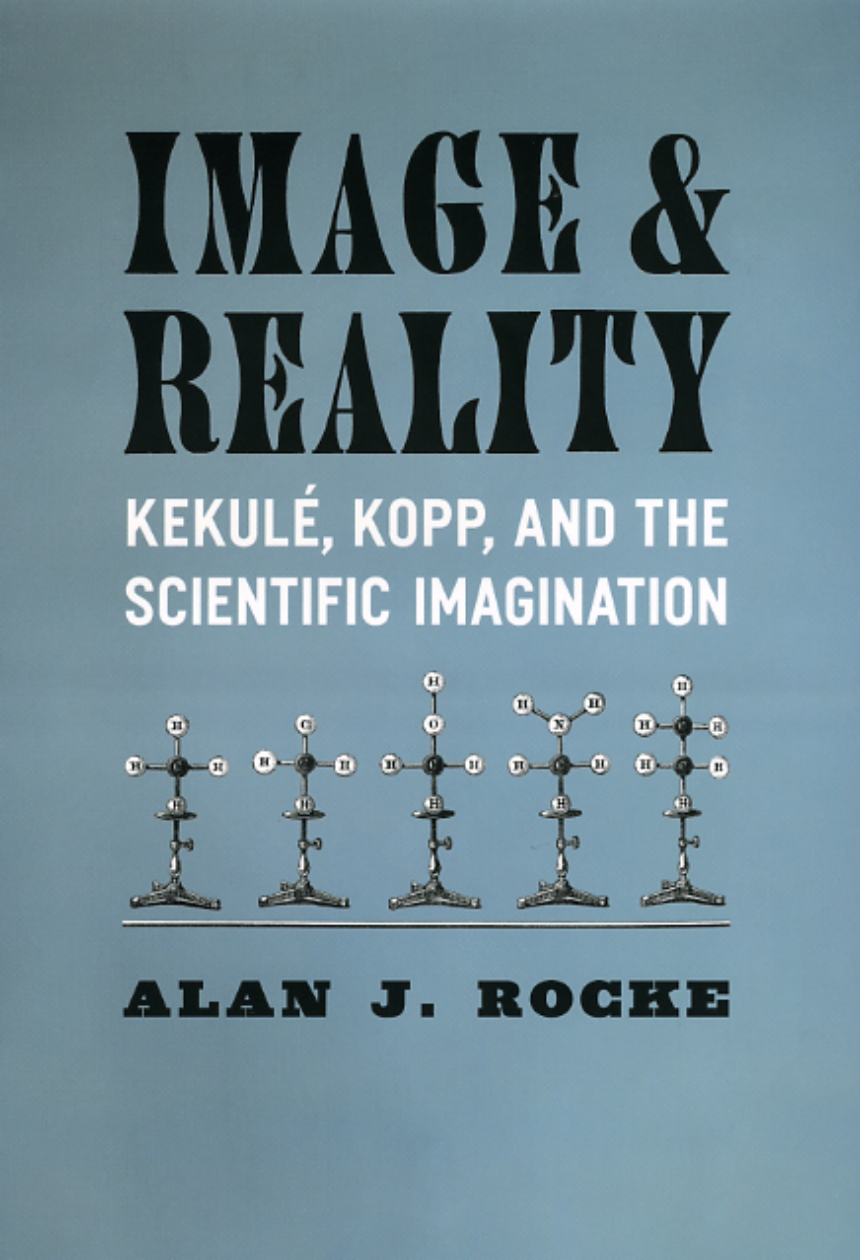Image and Reality
Kekulé, Kopp, and the Scientific Imagination
Nineteenth-century chemists were faced with a particular problem: how to depict the atoms and molecules that are beyond the direct reach of our bodily senses. In visualizing this microworld, these scientists were the first to move beyond high-level philosophical speculations regarding the unseen. In Image and Reality, Alan Rocke focuses on the community of organic chemists in Germany to provide the basis for a fuller understanding of the nature of scientific creativity.
Arguing that visual mental images regularly assisted many of these scientists in thinking through old problems and new possibilities, Rocke uses a variety of sources, including private correspondence, diagrams and illustrations, scientific papers, and public statements, to investigate their ability to not only imagine the invisibly tiny atoms and molecules upon which they operated daily, but to build detailed and empirically based pictures of how all of the atoms in complicated molecules were interconnected. These portrayals of “chemical structures,” both as mental images and as paper tools, gradually became an accepted part of science during these years and are now regarded as one of the central defining features of chemistry. In telling this fascinating story in a manner accessible to the lay reader, Rocke also suggests that imagistic thinking is often at the heart of creative thinking in all fields.
Image and Reality is the first book in the Synthesis series, a series in the history of chemistry, broadly construed, edited by Angela N. H. Creager, John E. Lesch, Stuart W. Leslie, Lawrence M. Principe, Alan Rocke, E.C. Spary, and Audra J. Wolfe, in partnership with the Chemical Heritage Foundation.
416 pages | 44 halftones, 3 line drawings | 6 x 9 | © 2010
History: European History, General History, History of Ideas, History of Technology
Physical Sciences: History and Philosophy of Physical Sciences
Reviews
Table of Contents
Preface
List of Abbreviations
1 Ether/Or
Springtime for Chemistry?
The Education of Alexander Williamson
Interpreting Chemical Atoms
Williamson and Graham
Grasping the Ether
The Experimental Dissection of Molecules
Excursus: Isolated Radicals?
The Spread of Williamsonian Theory
2 The Architect of Molecules
The Education of August Kekulé
Kekulé in London
Excursus: The Road to Valence
Molecular Dreams
3 Building an Unseen Structure
The Start of a Teaching Career
Early Work in Heidelberg
The Theory of Polyatomic Radicals
The Theory of Atomicity of the Elements
Molecular Epistemology
4 A Barometer of the Science
Writing a Textbook
Formulas, Models, Reality
Excursus: A Case in Point
Erlenmeyer and Molecular Theory
Constant or Variable Atomicity?
5 The Heuristics of Molecular Representation
Couper
Loschmidt
Butlerov
Crum Brown
Excursus: Heurism in Action
The Fate of the New Graphic Formulas
6 Molecules as Metaphors
Natural Types
Absolute Formulas
Excursus: Looking through the Stereoscope
Molecular Democracy or Autocracy?
The Revenge of Jupiter’s Children
7 Aromatic Apparitions
First Approaches to the Problem
Enter the Hexagon
Benzene through the Phenakistoscope
Excursus: Ring around the Rosie
Metachemistry?
8 Dimensional Molecules
Early Stereospatial Speculations
The Spiral Staircase
The Pyramid
Imagination in Science: Point/Counterpoint
Chemists, Physicists, and the Microworld
9 Kopp’s World
The Making of a Chemist-Historian
In amongst the Molecules
The Response
The Thirsty Chemists
10 Kekulé’s “Dreams”
The Festivities in Berlin
Kekulé’s Speech
The Aftermath
The Eureka Experience and the Unconscious Mind
11 The Scientific Image-ination
Mental Images and Science
Mental Images and History
Transdictive Images in Physics and in Chemistry
Bibliography
Index
